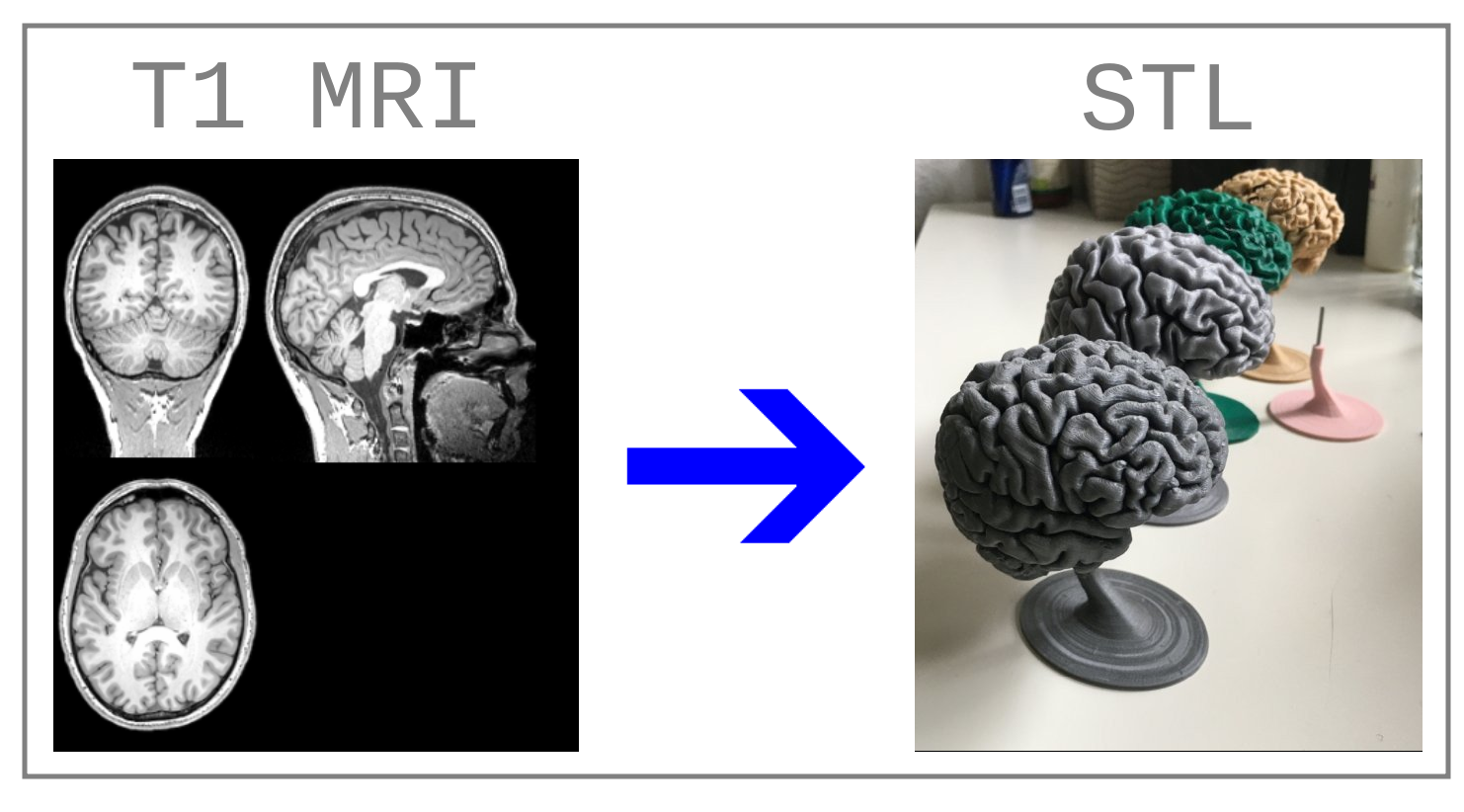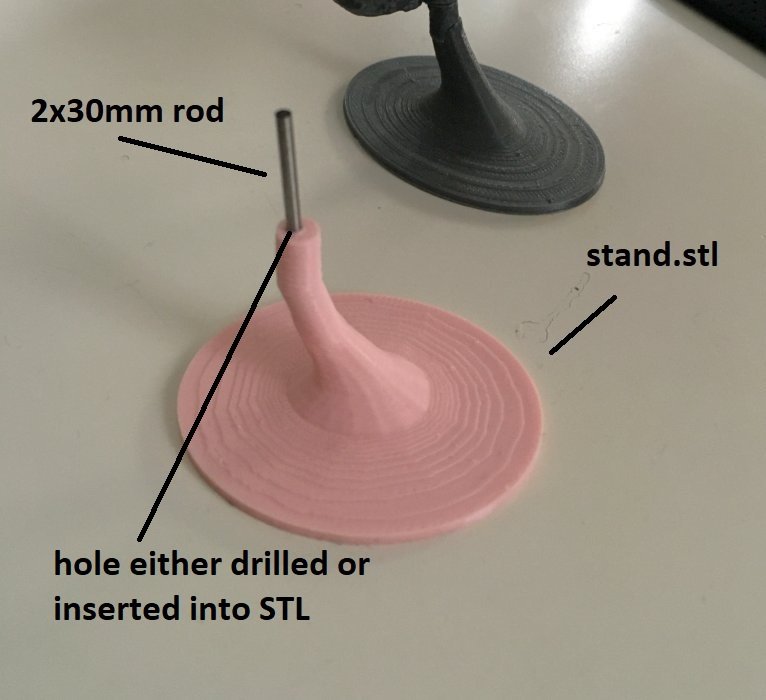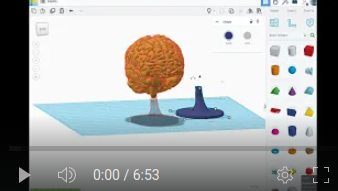A Docker image to create readily 3D-printable brains from T1 MRI scans. Just build the Docker image and run a command with your NIFTI file get a readily reconstructed STL mesh for 3D printing. This is an updated & extended version of miykael/3dprintyourbrain.
The actual process is as simple as running these two commands
docker build --tag 3dprintedbrain .
docker run -it -v ./:/opt/share 3dprintedbrain subject.niiPrerequisites:
- Docker client installed
- Freesurfer license (it's free)
- T1 MRI of your brain in NIFTI format (.nii or .nii.gz)
- you can convert DICOM files easily to NIFTI using dcm2niigui or dcm2niix
Follow the instructions here to install Docker for your system (if not already installed). It is available for all major operating system.
Clone this repository by running
git clone https://github.com/skjerns/3dprintedbrain_docker.git
Then put your freesurfer license in the cloned repository. You can get the license.txt for free at FreeSurfer Registration form.
Navigate into the newly cloned repository and build the docker image by running the following command.
docker build --tag 3dprintedbrain .
Put your subject.nii or subject.nii.gz file into the cloned repository. If your data is in DICOM format, you can easily convert it using the provided dcm2niigui.exe or dcm2niix or any other tool. NIFTI files contain all the brain data of a participant in one file.
Navigate into the newly cloned repository and simply run (Linux & MacOS):
docker run -it -v ./:/opt/share 3dprintedbrain subject.nii
and for Windows:
docker run -it -v .\/:/opt/share 3dprintedbrain subject.nii
This will run the script that automatically runs recon-all and extracts the brain structures, then smoothes them and puts them into one subject.stl. This process will take a couple of hours usually.
As a final result, there should be a subject.stl in your cloned repository folder which you can 3D print!
If you do not want to apply smoothing or decimation of vertices and want the raw output, simply call
docker run -it -v ./:/opt/share 3dprintedbrain subject.nii --smooth 0 --decimate 0
Using these two parameters, you can indicate the amount the cerebellum is smoothed and the number of target vertices (e.g. TinkerCAD only accepts <300.000 vertices, which is the scripts default), or a percentage (e.g. 0.5 to decimate half the vertices). Smoothing the cerebellum is highly recommended as it is very blocky/pixelated.
I use small metal rods to connect the stand and the brain. Just find one in your local DIY store, 2mm is good. For a beginning you can also sacrifice a fork and break off a fork tine and use that as a connector. Then you can either drill holes for connection or model them directly into the 3D model. Just connecting it via PLA (3D print) will not work, as it's not stable enough. Neither can you print the entire thing at once, you need to print the stand and brain separately for stability.
For modelling and adaptations I use http://tinkercad.com, else Meshlab or Blender also work fine but are a bit more complex. Using these tools you can easily pre-model the hole that you want to use to connect the stand to the brain.
Here's a video tutorial how to connect the stand to the brain using a 2x2x30 mm metal rod
So far I printed everything using http://treatstock.co.uk at 45% size, which is also the ratio the stand will fit nicely. Most brains will be around 7-8cm length when using 45% scaling. Cost for printing ranged from 10-30€, depending on the color and material (ie. wood is more expensive than PLA, so is translucent or glow-in-the-dark PLA. Cheapest is probably always gray or silver.)
If you have further questions, feel free to open an issue. Connecting the stand to the brain is the most fidgety of all the steps in the guide and requires some trying out yourself.
-
I'm getting the error
COPY failed: file not found in build context or excluded by .dockerignore: stat license.txt: file does not exist?- get your personal Freesurfer license (for free) at https://surfer.nmr.mgh.harvard.edu/registration.html and put it into the repository
-
My file is ending in .nii.gz , how do I get the .nii file?
- you can simply use the .nii.gz file, no problem. it's just a zipped format of the .nii
-
I don't want the mesh to be decimated that much / smoothed that much, I want the raw brain as it is reconstructed!
- you can use the parameters
--smooth Xand--decimate Xto indicate the number of smoothing steps and the target number of vertices or the percentage of decimation when calling the run command 4- How can I change parameters given torecon-all? - All parameters except smooth and decimate will be simply forwarded. You can e.g. call ``docker run -it -v ./:/opt/share 3dprintedbrain subject.nii -hires -openmp 4` to run the submillimeter option of freesurfer with 4 cores active.
- you can use the parameters
-
Wasn't there a version using WSL2 for windfows?The previous version of this README using WSL2 for Windows can be found here


